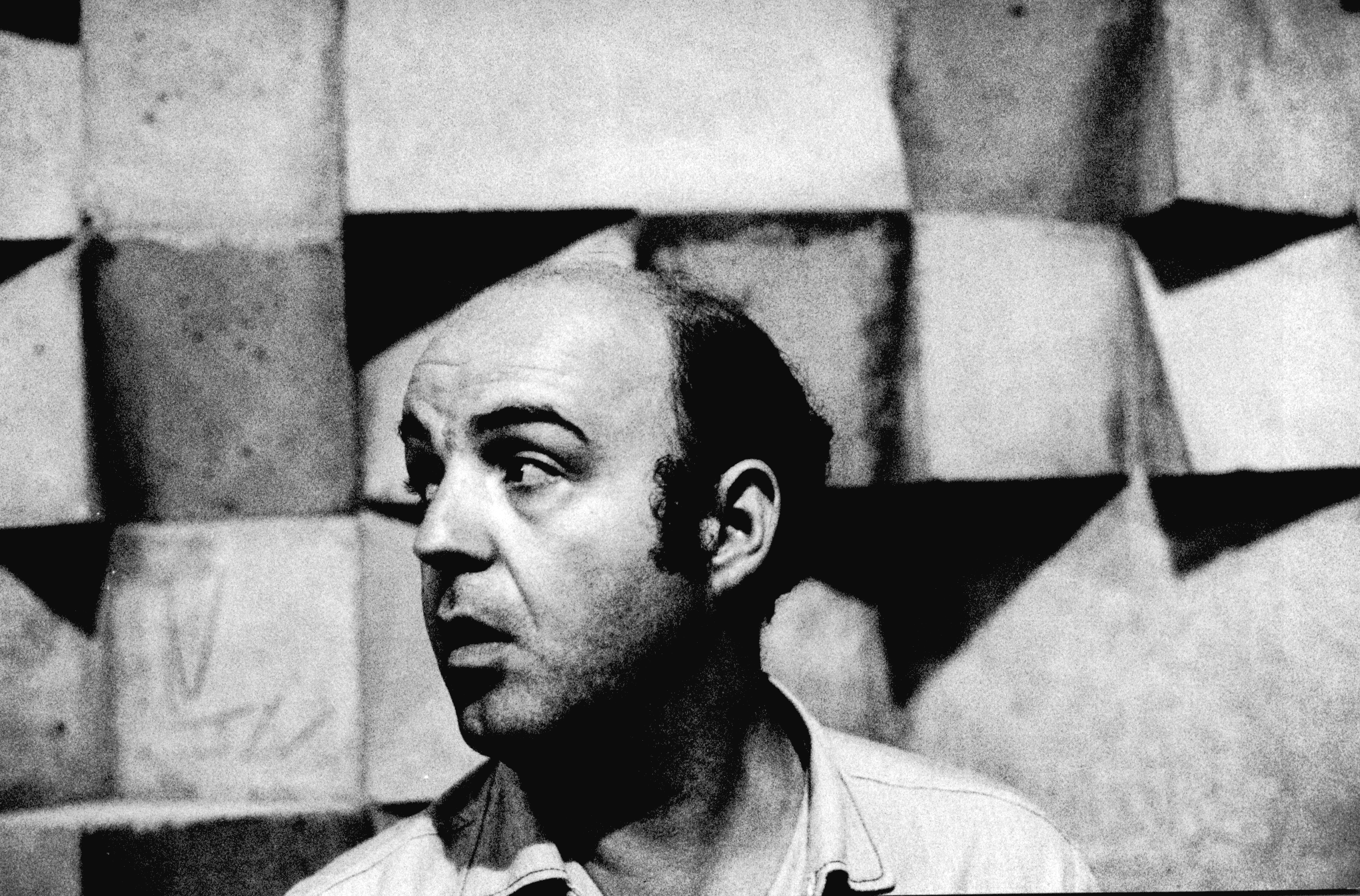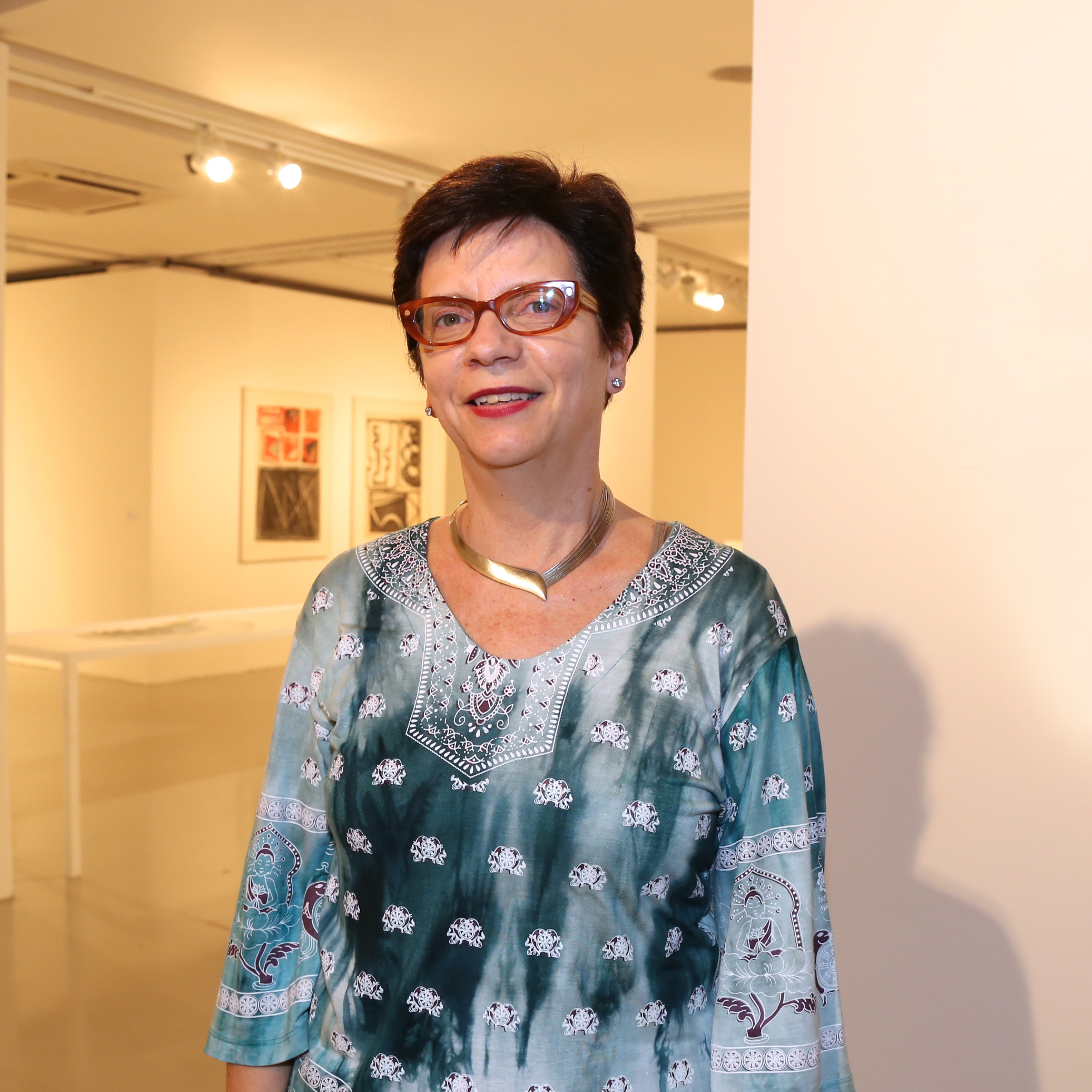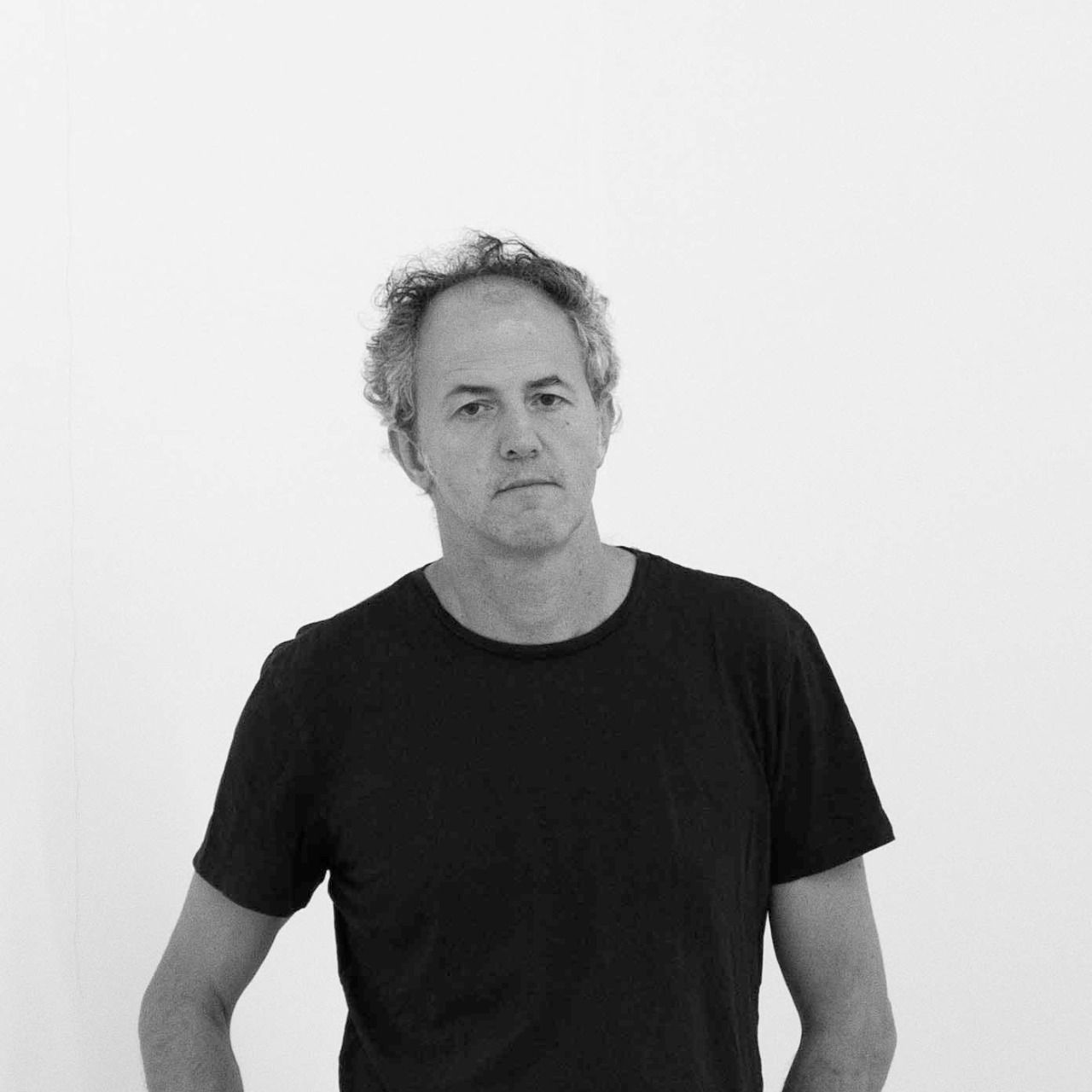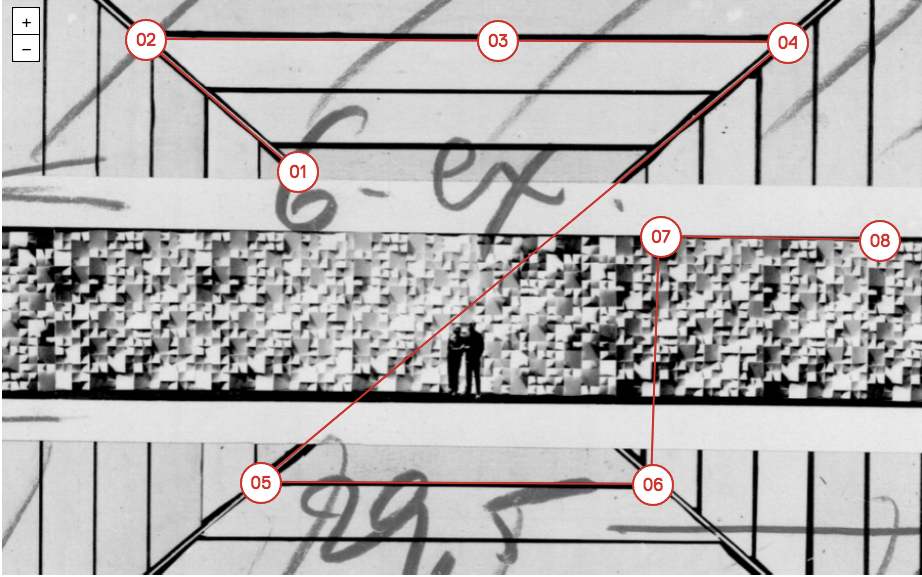by Julia Flamingo
Sergio Camargo’s greatest passion were the stones. The way he transformed the process of working with them in a manner of corporal and physical experience made him create one of the most important body of work in Brazilian history. Sergio Camargo (Rio de Janeiro, 1930-1990) is, in fact, one of the few Brazilian sculptors whose pieces take part in collections such as MoMA and Tate. Some call him a constructivist, other minimalist or cubist, however he never officially joined any of this movements. He was experimenting, learning with various artists, materials and styles, traveling here and there, creating new studios and absorbing what the surroundings would show him.

The digital exhibition ’mis-piedras - Sergio Camargo’ curated by Carlos Nunes and Marilucia Bottallo was built with Art Curator Grid’s Exhibition Tool to bring to the public a selection of photographies that show the artist in his studios in Rio de Janeiro, Paris and Massa, whether in contact with the raw material of his sculptures, or in the process of reflecting on his production. The show is a reflection derived from the eponymous book edited by Instituto de Arte Contemporânea (IAC), a private São Paulo-based non-profit organization, and based on the material of Sergio Camargo's personal archive deposited there. Read below for the interview we carried out with curator Marilucia Bottallo:
Julia Flamingo - Firstly, I would like to ask you to share the story of the book itself, as the starting point of this project. Where did the idea of working with photographs of Sergio Camargo's studios come from? Was it a request by IAC? How was the research process shared between Carlos Nunes and yourself? How long did it take to gather the material and how many photographs the book contains?
Marilucia Bottallo - The book emerged from the research conducted in the IAC's collection. Looking at those images, together with the Curatorial Council and Raquel Arnaud, we had the idea of giving prominence to these images that bring partial aspects of Sergio Camargo's creative process. However, it should be noted that the final format of the publication was an idea and a demand of Raquel Arnaud. This mention is important because Raquel has always had Sergio Camargo as a friend in addition to the relationship that both established as Marchand and artist. Therefore, she knew how fundamental the studios were as a place of creation and meditation on his art. To carry out this project, the artist Carlos Nunes - Cadão - was called. He had the role of conceiving and organizing the editorial project of the book. In the process, David Forell, who works at the Documentation and Research Center, and I, Technical Director of IAC, started to collaborate with documentary sources, information, and images and ended up getting involved in the process as a whole. Cadão is a great and very generous artist and I believe that he understood, in a very sensitive way, the welcoming spirit of Sergio Camargo. I think that this spirit is clear in the final selection of images. This work took a long time to be carried out carefully, having started in February 2019 and concluded in August 2020 with the publication of the book. The book has 70 photographic images, sketches of works, as well as excerpts from interviews and some of his poems.


JF - The different periods and surroundings of each of Sergio Camargo's studios as well as the access to materials and collaboration with other artists played an important role in determining his production. It is known, for instance, that in his studio in Italy, Sergio Camargo started to work with Carrara marble, for which he is very well-known nowadays. What other turning points you discovered during your in depth-research?
MB - Sergio Camargo is an artist that has been extensively studied by historians of contemporary art, curators, and critics who have always been revealing new stimulating and intelligent facets of the artist's work. In fact, I think the book was not intended to reveal unpublished aspects, but to emphasize some of his work processes and celebrate them. He had a kind of relationship with his production that gave great importance to meditation on his work. In it, it seems to me, that he gave the same amount of importance either to the concept and its application, in dealing with the material. Looking at his ‘stones’ was a way of executing them almost completely in the mental aspect and then bringing them into materiality. Perhaps this is the great interest of the book, the exhibition, and the aim of the presentation of these beautiful photographic images made throughout his career.

JF - In your curatorial text, you write that the exhibition "is an invitation to thought, but also, to the sensitivity, confidence, and comfort of a private space made public by the photographic record". It seems to me that attempts to reveal artists' studios to a broader audience help dismantling the romantic or even fetishized idea some may have of the creation process of an artwork. To what extent is this an ambition in your curatorial work?
MB - Actually, that question puts a smile on my face. I believe that having the chance to work with artists, their families, their processes over the years gave me the certainty that, despite the most varied processes, there is always a method, a clear goal, and an execution process that, in the case of artists like Sergio Camargo, were very thought out, elaborated, designed, calculated and executed with care and attention to the whole and, at the same time, to the details. I hadn't thought about it, but I think it is a very welcome ambition. If we manage to achieve this sensation, Cadão and I will be very satisfied.

JF - And finally, how was your experience with our Exhibition Tool? What kind of adaptations and changes you had to deal with when transforming the book into a digital exhibition?
MB - From the moment I first heard of this Exhibition tool I wanted to use it for a virtual exhibition organized at IAC. I believe that an exhibition of photographic images on Art Curator Grid's Exhibition Tool adapts to our curatorial aim of seeking to enlarge new aspects of the work done with the book. It is, for us, a reinterpretation and an invitation for the public to get to know the book, get closer to Sergio Camargo's plastic thinking, and, like us, be enchanted by it.
mis piedras — Sergio Camargo
Curated by Carlos Nunes and Marilucia Bottallo
On view from March 26 and June 26, 2021
Exclusively on Art Curator Grid
Would you also like to have your institution profile on our platform and curate digital shows with our Exhibition Tool? Send an email to hello@artcuratorgrid.com and we will show you how!